I first visited New Caledonia more than 30 years ago and was captivated by this slice of France in the South Pacific. Spectacular natural scenery, a cosmopolitan capital city where most people spoke French and a unique fusion of French and Melanesian culture made New Caledonia an exotic jewel in the Pacific Ocean. Today, I don’t see it through quite the same rose-coloured glasses as then – it has its dark side but what destination doesn’t? – but it is still a fascinating place to visit.
New Caledonia is an archipelago located in the south-west Pacific Ocean, south of Vanuatu and about 795 nautical miles east of Australia. British explorer and navigator Captain James Cook discovered the mainland in 1774. Its rugged coastline and interior reminded him of Scotland so he named it New Caledonia in honour of his Scottish father.
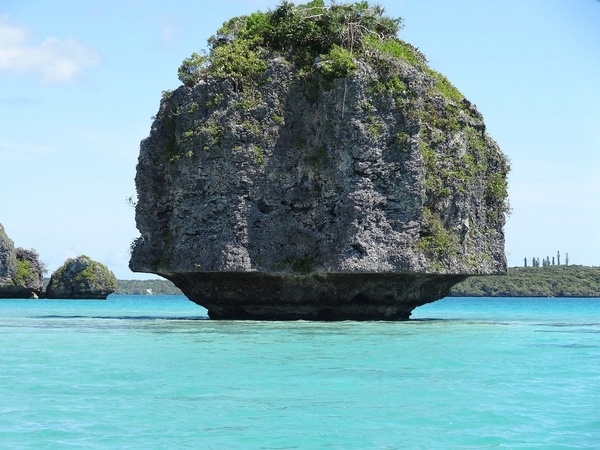
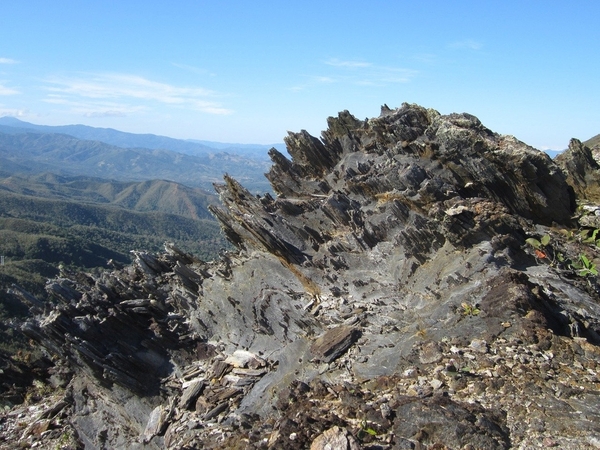
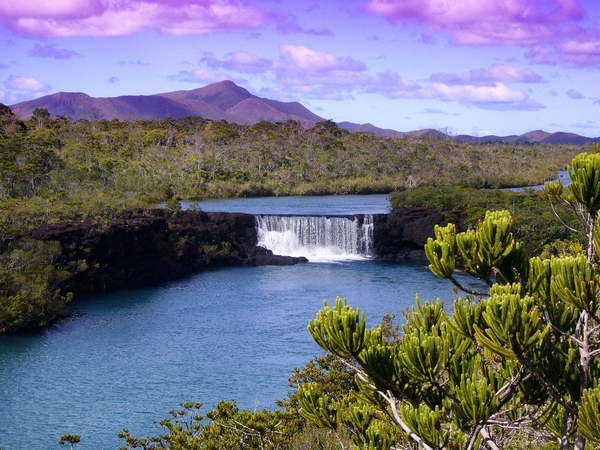
Both France and Britain settled the group of islands including Loyalty Islands, Isle of Pines, Belep and a number of smaller islands in the early 19th century, but it became a French colony in 1853. Today, New Caledonia has a unique status among French overseas territories as a “special collectivity”, meaning that a gradual transfer of power from the French State to New Caledonia has given the country significant autonomy.
New Caledonia boasts the world’s largest lagoon (below) which covers almost 15,000 square miles. The vast body of water is also one of the largest marine reserves in the world, a key reason why the lagoon was registered as a UNESCO World Heritage Site in 2008.
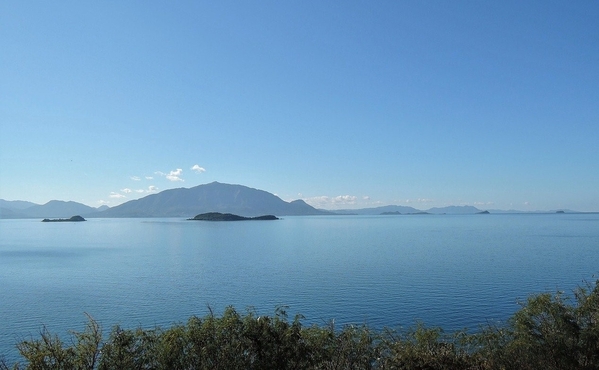
New Caledonia’s troubles, such as they are, relate mainly to a push for independence from France by the indigenous Kanak people. This has led to periodic uprisings, particularly in the 1980s when the country was shaken by violent clashes between opponents and supporters of independence. The two sides were finally persuaded to take part in negotiations, which led to an agreement that self-determination referendums would be held to allow the New Caledonian people to vote for or against independence.
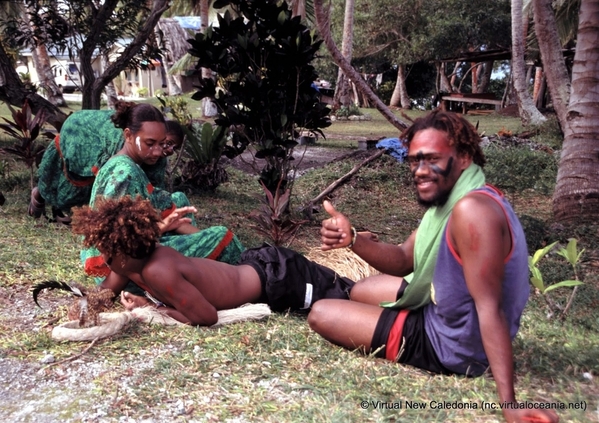
Under the terms of the 1998 Nouméa Accord, referendums were held in 2018 and 2020, both of which rejected independence, the second by only a narrow margin. A third and final poll was held on 12 December 2021 when a staggering 96.5 per cent of voters said no to independence. This result was somewhat skewed by the fact that the turn-out was less than 45 per cent of eligible voters, and the referendum was boycotted by pro-independence supporters who objected to its timing. Nevertheless, it was good news for Paris as New Caledonia is of strategic importance to France and is part of a wider skirmish between Western countries and China to exert influence in the Pacific.
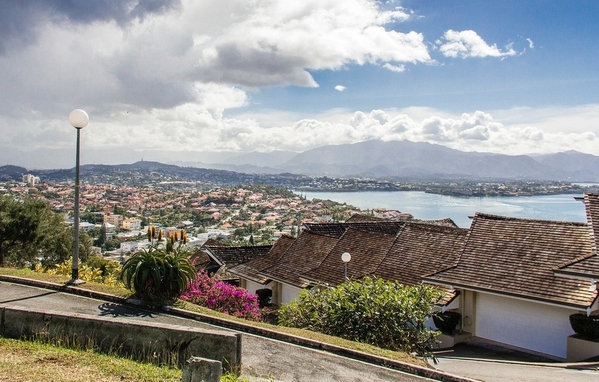
I have written previously about another French paradise in the Pacific – Tahiti and the islands of French Polynesia – but they’re a 10-hour flight from Sydney. New Caledonia is practically on Australia’s doorstep. It is just a two-hour flight from Brisbane and less than three hours from Sydney, making it a convenient destination for both Australians and visitors to this part of the world from farther afield.
Situated on the archipelago’s largest island, Grande Terre, New Caledonia’s capital, Nouméa, is a raffish and cosmopolitan city lined with magnificent beaches and waterways, historic buildings and no shortage of scenic vantage points.
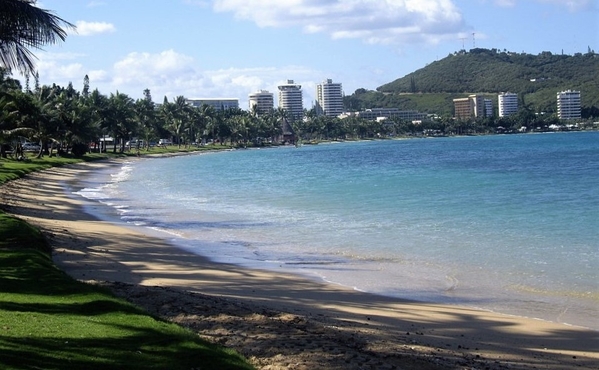
Place des Cocotiers or Coconut Tree Square (below) is the heart of the city. It’s huge, covering about 10 acres and sloping gently from east to west. At the top end is a band rotunda, a famous landmark dating back to the late 1800s, and nearby is a popular pétanque pitch and a giant chessboard. At the other end there are lush palms and large spreading trees. Regular concerts and street markets are held in the square.
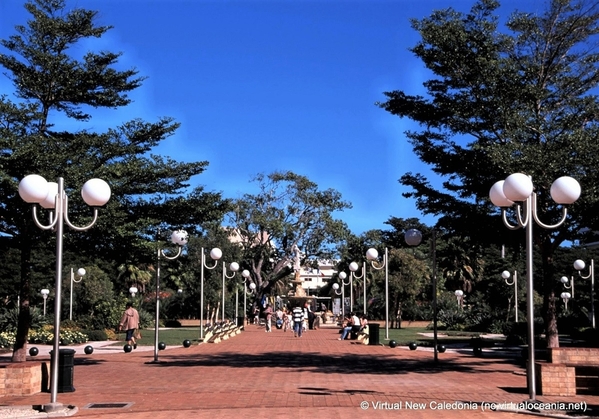
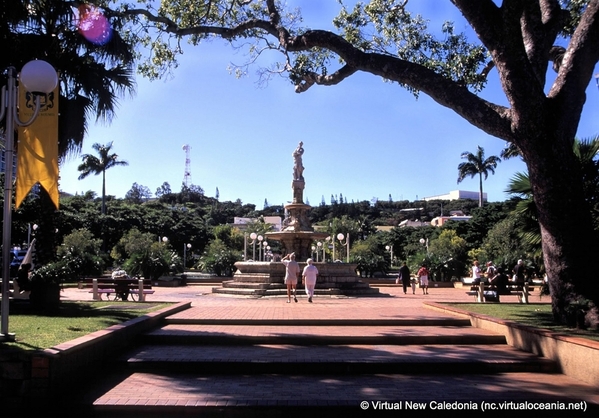
Facing the lagoon, Nouméa offers a panorama of waterfront views and a truly unique local culture. The bay attracted the first Europeans to settle here in 1853 and that appeal has not diminished, as testified by the people of many nationalities seen on the beaches of Baie des Citrons and Anse Vata. Situated within the bays, Îlot Maître and Îlot Canard both offer an ideal setting for a day of exploration or relaxing and can be reached in just a few minutes by boat.
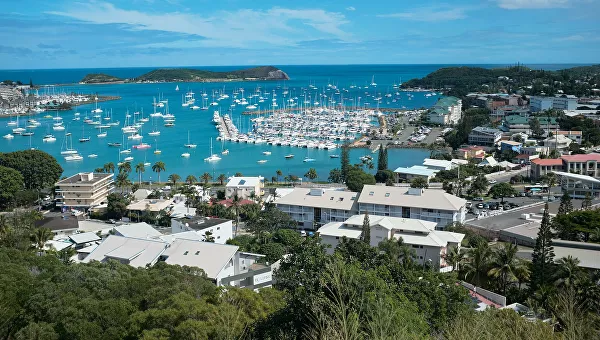

Finding somewhere a little different to stay in Nouméa can be challenging. I’m not a fan of resorts, of which there are several, and there are also the big-name hotel chains but nothing really stands out. Accordingly, I hesitate to make a recommendation, but Hotel le Lagon is a favourite of many visitors. A family-run property, Hotel Le Lagon prides itself on its welcoming environment and has just 62 rooms. It’s situated 100 metres back from Anse Vata beach but still close enough to the bustling and thriving local café and restaurant scene.
New Caledonia’s capital has built its Pacific identity through a blending of cultures and styles. This cultural diversity is reflected in the shops, restaurants and hotels, and in the architecture seen throughout the city’s streets.
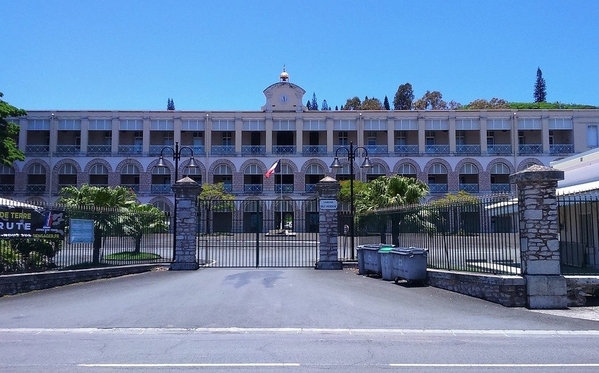
Although colonial-era houses are scarce nowadays, some that remain have been beautifully restored, including Maison Célières, Château Hagen and the old Nouméa City Hall, which now houses the city museum (below).
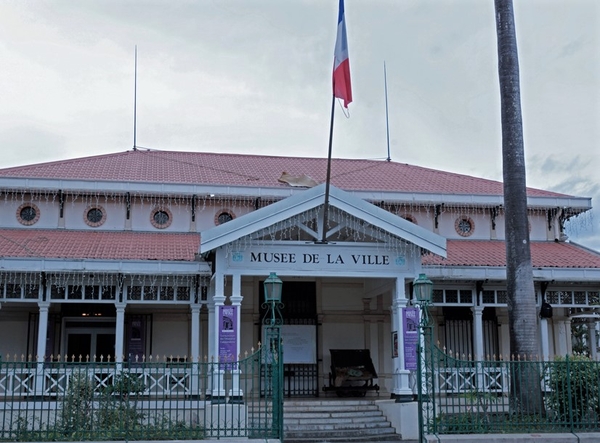
Most of New Caledonia’s cultural attractions are concentrated in Nouméa where numerous museums, art galleries, theatres and cinemas are found. A city home to around 100,000 people, Nouméa offers a number of activities that satisfy most visitors with their diversity.
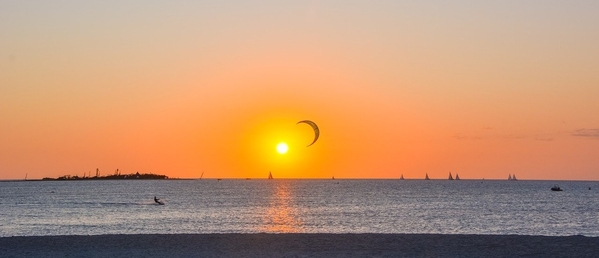
Outdoor sports can be enjoyed all year long. Snorkelling, windsurfing and kitesurfing are popular, along with golf and tennis. It's also a lively city at night with many bars and clubs, as well as two casinos for those who enjoy a flutter.
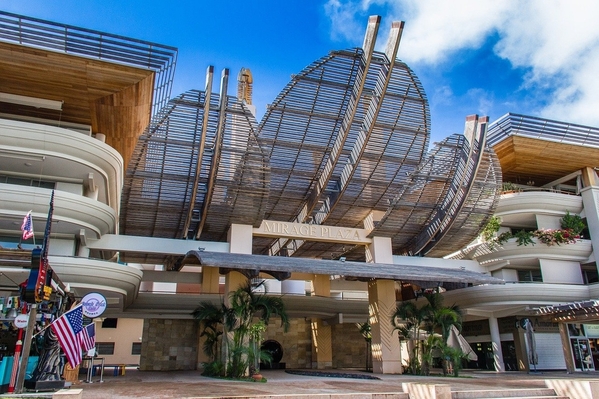
Home to big-name international brands, luxury boutiques and carefully curated concept stores, Nouméa offers fashion lovers the perfect excuse to shop … as if they need one. From clothing and accessories to fragrance, shoes and jewellery, the city’s retailers stock a variety of products to suit most buyers. The best locations for shopping are Rue de l’Alma, Rue de Sébastopol and the Promenade of Anse Vata. Remember though that this is a French territory, not one of the laidback Pacific islands, and prices can be expensive.
About five miles north-east of Nouméa is the Tjibaou Cultural Centre (below), situated in a peaceful woodland and mangrove setting on Tina Peninsula. It celebrates the indigenous Kanak culture and is named after Jean-Marie Tjibaou, a former politician and leader of the Kanak independence movement who was assassinated in 1989. Displays include sculpture, paintings and photographs representing Kanak culture, as well as other cultures from around the Pacific.
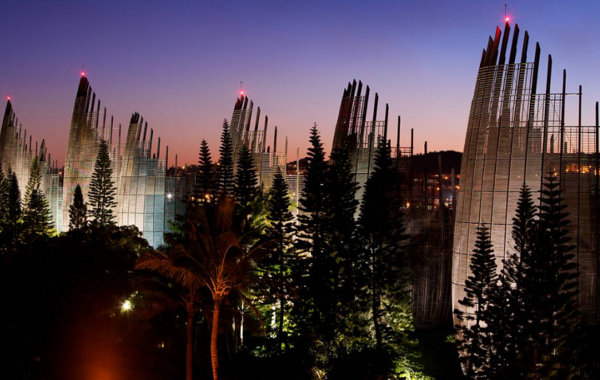
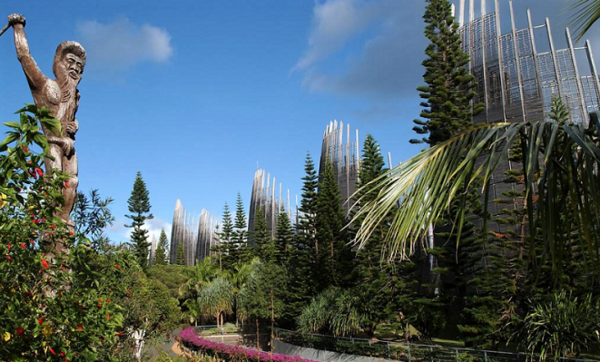
The main buildings are a series of tall, curved wooden structures which rise majestically above the trees. The harmony between this contemporary architecture and the surrounding landscape is exquisite. The structures were designed by Italian architect Renzo Piano, who also designed the Shard in London and the Whitney Museum of American Art (new building) in New York City and was part of the team that designed the Pompidou Centre in Paris. City bus number 40 and the Nouméa Explorer bus run regularly to the centre.
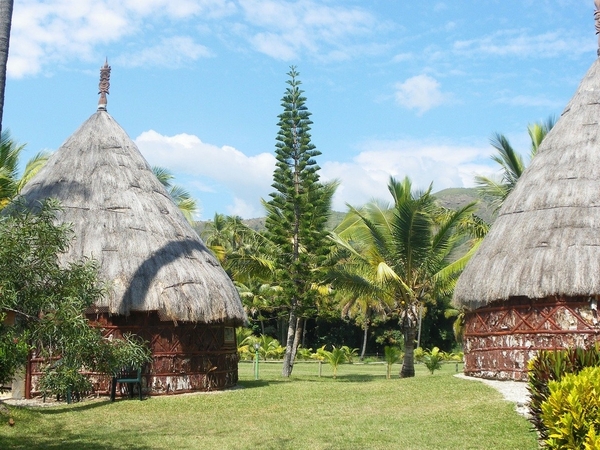

Nouméa is the gateway to New Caledonia’s diverse regions and unspoiled islands. From here you can hire a car and set out on a road trip taking in both the west and east coasts or head for what is known as the Great South. Alternatively, you can tour the regions by boat or light plane.
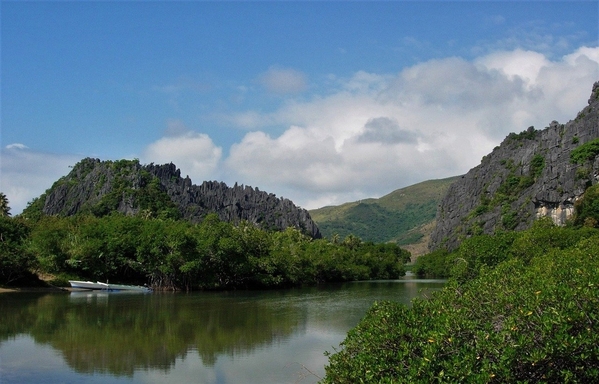
The Hienghène area on the east coast of New Caledonia is known for its beautiful wild landscapes including the famous Cliffs of Lindéralique.
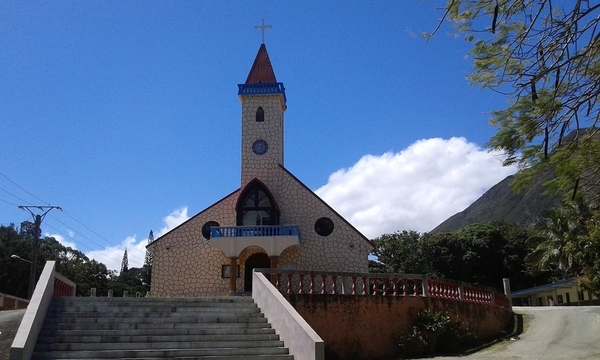
Church at Plum, a coastal village in the commune of Le Mont-Dore on the south-west coast of New Caledonia.
I try not to mention COVID too much these days because I think people are sick of hearing about it. However, it’s worth noting that New Caledonia is a little different in that it had remained almost free of the virus until recently and its borders were firmly shut in a bid to keep it that way. Unfortunately, that all changed in September last year when Delta snuck in. Now, of course, they have Omicron like the rest of us and are understandably a little jumpy. Nevertheless the government eased entry restrictions in December and fully vaccinated overseas visitors with a negative test result can now enter the country. Right now there is a further off-putting requirement for a week’s quarantine on arrival, but hopefully it won’t last too long. Check here periodically for updates.
Next time … New Caledonia’s islands

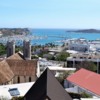










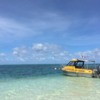
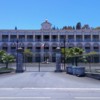






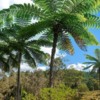


Comments (2)